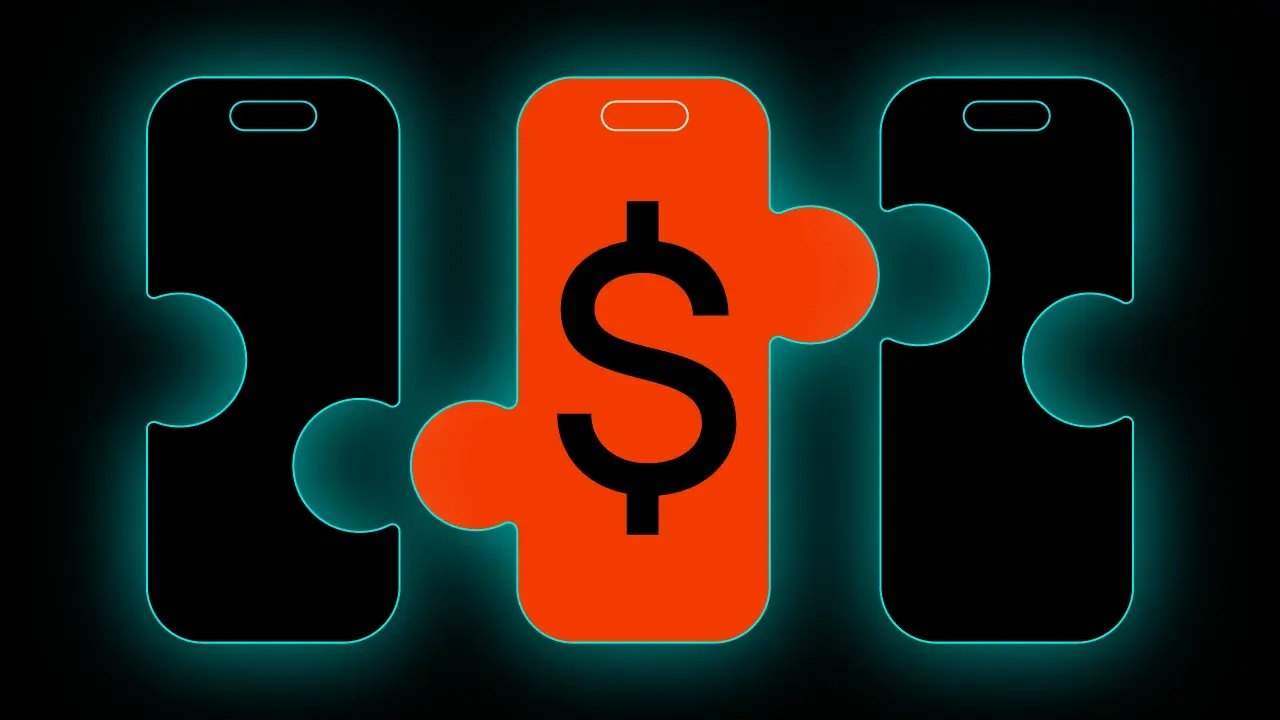The rise of embedded finance: transforming the future of transactions


Analysts predict the global integrated finance market could reach an astonishing value. The market may be worth around $570.9 billion by 2033. This represents a compound annual growth rate (CAGR) of 21.3% between 2024 and 2033. Let us explore what embedded finance is. We will look at its definition and specific examples. We will also consider the benefits and challenges it presents.
Table of contents
What embedded finance really is
Embedded finance is the integration of financial services into non-financial businesses. Think of services like payments, loans, or insurance. These are offered by companies that are not banks or insurers.
Imagine you are booking a flight online. You get the option to buy travel insurance without leaving the airline’s website. This is a perfect example of embedded finance in action.
The key feature is giving customers access to financial products seamlessly. They do not need to visit a bank’s website or an insurer’s portal. Everything happens smoothly within a single, non-financial app or platform.
This integration makes the entire process much faster for the user. It also makes it incredibly convenient. The experience feels like a natural part of the original transaction.
The model works by connecting three main parties. It links the brand offering the product, its customer, and a financial technology provider. This connection is made possible using Application Programming Interfaces (APIs).
APIs are special tools that allow different computer systems to communicate. They enable a secure and smooth exchange of data. This ensures the financial part of the service works perfectly within the non-financial application.
A core concept supporting many embedded finance solutions is Banking-as-a-Service (BaaS). BaaS allows ordinary companies to use a licensed bank’s secure infrastructure. This provides the foundation for them to offer financial products legally and safely.
Types of services in the world of embedded finance
The field of embedded finance covers a wide range of services. These services are designed to appear at the exact moment a customer might need them. They make financial transactions feel like a natural part of another activity.
Embedded payments
A fundamental feature of embedded payments is their deep integration. The payment process becomes part of a non-financial product or service. You often do not even notice you are making a payment.
This allows many stages of a transaction to be automated. Payments can be processed in real time. The user does not need to leave the app or website they are using.
Think about a ride-sharing app. You finish your journey and get out of the car. The payment happens automatically in the background, a truly embedded experience.
Embedded lending
Embedded lending allows customers to get credit at the point of sale. This can include options to delay a payment. It also allows customers to split the cost into several instalments.
This happens directly within the shopping process. The most recognisable form of this service is Buy Now, Pay Later (BNPL). This model lets people purchase an item immediately and pay for it over time.
Forecasts suggest the embedded lending segment will grow the fastest. This is expected to be a major driver of the market in the coming years. Its convenience makes it very attractive to consumers making purchasing decisions.
Embedded insurance
Embedded insurance involves offering protection at the most relevant time. A common example is getting insurance for new electronics. This offer appears at the exact moment of purchase.
By integrating the offer into the sales process, the customer can easily protect their new item. They do not have to search for a separate insurance policy. This removes a significant amount of effort for the consumer.
This approach benefits both the customer and the retailer. The customer gets immediate peace of mind. The retailer can offer a more complete service to its clients.
Embedded investment
Embedded investment is also gaining considerable popularity. It makes it simpler for people to start investing. Often, this involves very small amounts of money.
A good example is the American company Greenlight. It offers a debit card for children. The associated app also provides a simple way to take the first steps in investing.
Another form of embedded investment is seen in popular payment apps. Services like Venmo or PayPal now allow users to buy cryptocurrencies. This greatly lowers the entry barrier for people interested in these types of digital assets.
Global and Polish examples of use
Transport and retail giants are setting the pace
The transport and mobility sector provides excellent examples. Uber is a well-known case. The app not only connects passengers with drivers but also fully integrates payments.
A user does not need to worry about cash or a card machine. The fare is handled automatically and invisibly in the background. This creates a frictionless experience for the rider.
Mercedes Pay works in a similar way. It allows drivers to pay for fuel from their car’s dashboard. It can even be used to activate extra features in the vehicle remotely.
The retail and food service sectors are also full of examples. Starbucks has been developing its mobile app for years. It allows customers to order and pay for coffee ahead of time.
The app also functions as a loyalty programme. Customers can collect points with every purchase. This encourages them to keep using the service.
The American retail chain Target offers its RedCard. This is an integrated payment system. It also rewards customers with a 5% discount on their shopping.
This combined approach of payment and reward helps to build strong customer loyalty. Shoppers are encouraged to use the card for all their purchases at the store. This makes the shopping experience both convenient and cost-effective.
In the financial technology space, Klarna has become a global leader. It provides BNPL solutions to thousands of retailers worldwide. This gives millions of customers flexible payment options at the checkout.
Polish businesses are also embracing integrated finance
A leading example is how some large online retailers offer financing. Services similar to Allegro Pay in Poland allow customers to defer payments. They can often delay payment for 30 days or split the cost into instalments.
This flexibility often has a positive impact on a customer’s decision to buy. It can make larger purchases feel more manageable. This leads to increased sales for the retailer.
We are also seeing interesting collaborations in business finance. Factoring services, for instance, are being integrated into other platforms. Leaders in this industry connect their services directly with business software.
Factoring helps businesses manage their cash flow. It allows a company to get cash quickly by selling its unpaid invoices. Integrating this service makes it easier for businesses to access the funds they need.
Prospects and potential: how embedded finance will change the world
Short-term prospects (to 2030)
In the period up to 2030, we expect dynamic revenue growth. This growth will occur across all segments of embedded finance. Payments, lending, insurance, and investments will all become more common.
A key factor will be the rising adoption rate among consumers. People increasingly value convenience and personalisation in their services. Embedded finance delivers on both of these expectations.
We also anticipate further technological improvements. Advances in artificial intelligence will be particularly important. Data analysis and automation will also play a crucial role.
These technologies will allow for the creation of more advanced products. Financial services will become even more intuitive. They will better predict and meet customer needs.
Long-term transformative potential
In the longer term, embedded finance could fundamentally transform the entire financial industry. The traditional model of banking is likely to change significantly.
The old model required a customer to actively seek out services. They would have to go to a bank or an insurer. This is gradually being replaced by a new approach.
In the new model, financial services are woven into other activities. The point of contact with the customer shifts. It moves from the financial institution to the non-financial service provider.
Integrated finance also opens doors to new markets. It can reach customer segments that were previously inaccessible. Services become available to people and companies outside the traditional financial system.
By lowering entry barriers and distribution costs, it promotes financial inclusion. This can provide valuable services to those who have been underserved. This helps more people participate in the modern economy.
As we have noted, the global market has the potential to exceed $570.9 billion by 2033. This figure clearly illustrates the enormous scale of the coming changes. It points towards a future where finance is a utility, not a destination.
Embedded finance: key conclusions
Integrated finance is not just another technological trend. Many experts see it as a complete redefinition of how financial services are distributed. It is changing the relationship between consumers and finance.
The scale of this transformation is confirmed by hard data. The global market is forecast to grow significantly. Adoption by businesses, particularly in e-commerce, is already very dynamic.
Technologies like APIs and Banking-as-a-Service are the driving force. They allow financial services to be woven directly into the customer journey. This includes everything from payments and BNPL loans to insurance.
This process creates a new kind of ecosystem. In this system, businesses benefit from higher conversion rates and customer loyalty. Customers, in turn, receive unprecedented levels of convenience.
Financial institutions also gain from this new model. It provides them with an efficient way to access new markets. They can reach a wider range of customers through their non-financial partners.
Challenges related to regulation and technology still exist. However, the direction of the financial sector is clear. It is moving towards a model where services are no longer a destination in themselves.
Instead, finance is becoming an invisible and contextual part of our daily activities. It supports transactions and life events in the background. This makes our interactions with money simpler and more efficient.
Frequently Asked Questions About Embedded Finance
1. What exactly is embedded finance?
Embedded finance refers to the integration of financial services directly within non-financial websites, applications, and business processes. In simple terms, it allows companies that are not banks to embed financial services into their existing offerings on their non financial platforms.
Instead of sending a customer to a separate banking site to make a payment or apply for a loan, the transaction happens seamlessly within the original customer journey. This approach to embedded finance makes accessing these financial services more convenient and contextually relevant. The core idea of embedded finance is to bring the functionality to the customer at the exact moment of need.
2. How does embedded finance work?
The way embedded finance works is through a technological partnership between a consumer-facing business, a financial partner, and a technology provider. The key enabling technology is the use of secure application programming interfaces, more commonly known as APIs.
This api banking model allows for the secure and efficient data sharing required to process transactions. Non financial companies leverage this digital infrastructure to offer financial services without needing to become banks themselves.
They partner with licensed financial institutions, which provide the regulated foundation for the products. This powerful collaboration is central to the success of embedded finance.
3. What are the main types of embedded finance services?
The scope of embedded finance is broad, covering several key areas. The most common embedded finance products include:
- Embedded Payments: This is the most common form of embedded finance, where online payments are integrated so smoothly that they feel invisible. Examples include ride-sharing apps where payment is automatic, or systems that allow you to easily transfer money or handle bill pay from within another application.
- Embedded Lending: This involves offering credit at the point of need, such as ‘Buy Now, Pay Later’ (BNPL) options at the checkout.
- Embedded Insurance: This is the practice of offering insurance coverage as part of a product or service purchase, like getting travel insurance when booking a flight. For example, embedded insurance can be offered with new electronics.
- Embedded Investment: This makes investing more accessible by integrating it into everyday apps. Users can invest small amounts through platforms they already use for other purposes, linking directly to their bank accounts. These financial tools are a key part of embedded banking.
4. Why is embedded finance so important for modern businesses?
For businesses, the decision to offer embedded finance is a strategic one. When businesses integrate financial services, they can unlock significant benefits that help them remain competitive.
Firstly, it creates powerful new revenue streams and diversifies existing revenue streams. Secondly, it dramatically improves the customer experience by making transactions smoother and removing friction.
This convenience strengthens customer relationships and builds loyalty. Ultimately, embedded finance allows a business to provide more value to its customers by becoming a one stop shop for their needs related to a specific transaction.
5. How does embedded finance benefit consumers?
Consumers gain immense value from embedded finance. The primary benefit is the seamless integration of financial tools into familiar platforms, which makes life easier.
This approach provides faster access to funds and services, whether it’s instant financing at checkout or quicker payouts for gig workers directly to their bank accounts. It simplifies personal financial management, as users can often track expenses, make payments, and manage financing from a single app. This removes the need to juggle multiple services or visit different websites.
For many, including freelancers and gig workers, getting debit cards or opening bank accounts via a platform they already work with is a significant advantage.
6. Can you provide some real-world examples of embedded finance?
Embedded finance is already all around us. Ride-sharing giant Uber is a classic example; payment is fully integrated into the company’s platform, creating a frictionless experience. In retail, Target’s RedCard offers an example of branded credit cards that combine payments with discounts, streamlining the purchase process.
Starbucks uses its mobile app for integrated payments and a loyalty programme. In business finance, factoring services are being integrated directly into accounting software, helping businesses manage their cash flow more effectively by linking to their payment accounts.
These examples from non financial companies show how they can embed financial services into their digital platform to enhance what they offer. This use of embedded finance is a key trend.
7. What is the expected growth of the global embedded finance market?
The future of the global embedded finance market looks exceptionally strong. Analysts predict its value could soar to approximately $570.9 billion by 2033, expanding at a compound annual growth rate (CAGR) of 21.3% from 2024.
This rapid expansion highlights the immense potential of the embedded finance market. The growth is driven by increasing consumer demand for convenience and the adoption of these financial services by a growing number of financial companies and non-financial brands. The rise of embedded finance is a global phenomenon.
8. How is embedded finance impacting traditional banks and financial institutions?
Embedded finance is reshaping the landscape for traditional financial institutions and traditional banks. Rather than being a threat, it presents a massive opportunity for new business models and partnerships.
Financial institutions can expand their reach by partnering with non-financial brands, accessing vast new customer bases without significant marketing expenditure. These collaborations allow traditional banks to provide their regulated banking services through the platforms of their partners.
Many financial companies now actively seek to embed financial services into third-party ecosystems. This shift towards embedded banking and digital banking is prompting a re-evaluation of how to offer embedded finance effectively.
9. What are the key considerations for implementing embedded finance?
While the opportunities are vast, implementing embedded finance requires careful planning. Enhancing security is paramount, as the systems handle sensitive financial data. Therefore, a robust approach to data sharing and cybersecurity is essential. Furthermore, navigating regulatory compliance is a critical challenge, as financial services are heavily regulated.
This is why partnerships between nonfinancial companies platforms and expert financial service providers are so important. These collaborations ensure that offerings are compliant, secure, and built on the infrastructure of established financial institutions, which can include managing customer bank accounts securely. To embed financial services correctly requires a focus on these key areas.
10. What does the future hold for embedded finance?
The future of embedded finance points towards a profound financial transformation. Embedded finance represents a move away from finance as a destination and towards finance as an invisible, contextual utility that supports our daily activities.
As embedded finance continues to evolve, it will significantly boost financial inclusion by providing greater financial access to underserved populations through the non financial platforms they already use. In our increasingly digital world, the seamless integration of financial services will become the standard, improving personal financial management and creating new revenue streams for businesses.
This evolution, powered by a sophisticated digital platform, will enhance the customer experience and redefine the role of banking services, financial companies, and embedded banking in the global economy, all while making it easier for users to manage their funds across various bank accounts.
This blog post was created by our team of experts specialising in AI Governance, Web Development, Mobile Development, Technical Consultancy, and Digital Product Design. Our goal is to provide educational value and insights without marketing intent.




